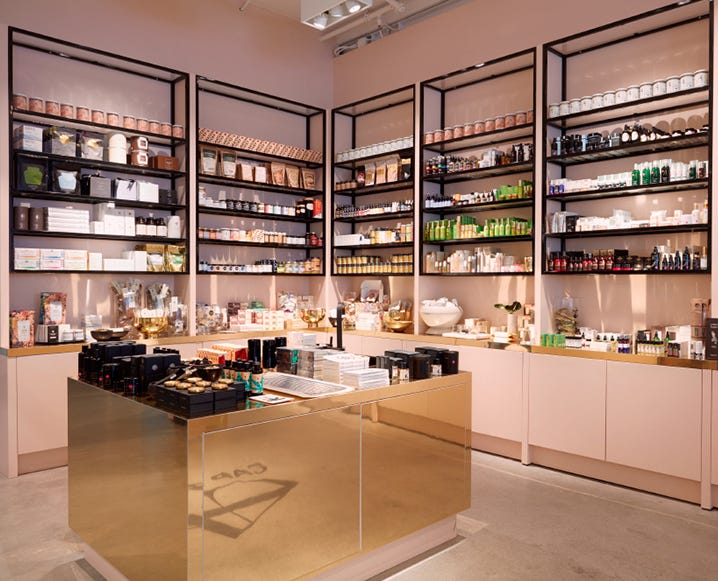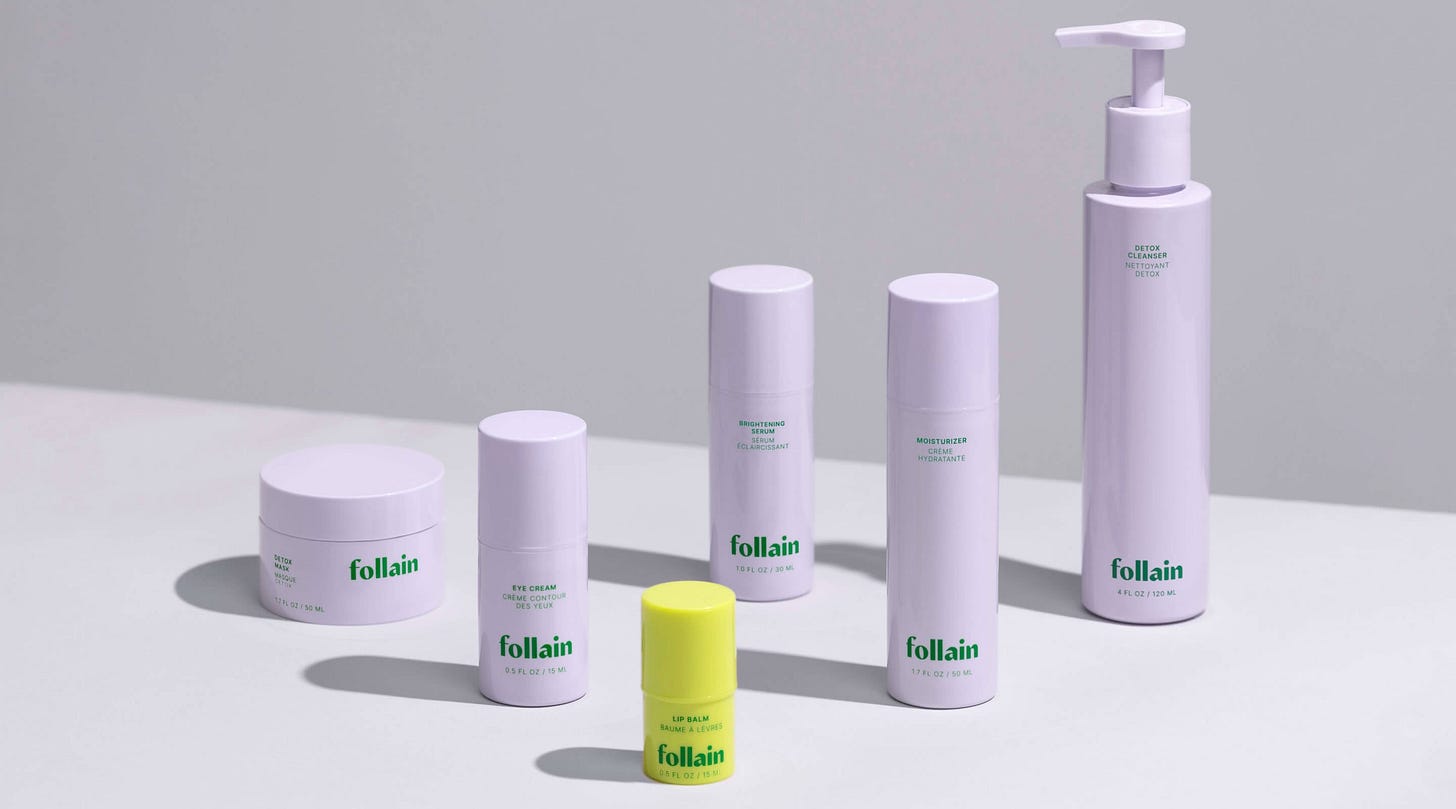10: The Current State of Independent Beauty Retailers - Where Have the Beauty Curators Gone?
From Standard Dose to Shen Beauty: Why Indie Beauty Retailers Are Struggling
The beauty retail landscape has experienced seismic shifts in recent years, with several notable independent beauty retailers either shuttering their doors or drastically altering their business models. Once hailed as the curators and gatekeepers of the beauty industry, many of these retailers are now struggling to maintain their foothold in an increasingly competitive and changing market.
What’s happening?
If we are to go way back, we could point to Spirit Beauty Lounge closing, citing “copycats that came and ate our lunch” in one such e-mail to their audience, a pointed acknowledgement of the rise of smaller e-tailers offering deeper discounts, and big box players like Credo and The Detox Market who deploy their venture backed resources to crowd out other players. But let’s look at more recent news:
The Quiet Closure of Standard Dose
Standard Dose, once a pioneer in wellness and beauty retail with a focus on CBD-infused products, has quietly ceased operations . The closure of Standard Dose, a purveyor in high growth beauty segments such as CBD and wellness, marks a significant moment in the beauty industry, highlighting the challenges faced by niche retailers in sustaining their business amidst shifting consumer preferences and market saturation.
The Fall of Shen Beauty
Shen Beauty, a beloved Brooklyn-based boutique known for its expertly curated selection of high-end beauty products, closed its doors in October 2023. The store's closure underscores the difficulties faced by smaller players, even those with industry connections. Shen’s founder, Jess Richards, is a former Vogue editor and consultant with many beauty brands, including Dr. Barbara Sturm. In the omni-channel digital age, business models are evolving quicker than small teams can keep up with.
CAP Beauty's Strategic Shift
CAP Beauty, originally a multi-brand retailer with a boutique in NYC known for its dedication to natural and green beauty products, has shuttered its physical location and pivoted its focus towards developing and promoting its own brand of products. This strategic shift reflects a broader trend in the industry, where retailers are moving away from curating products from various brands to creating and selling their own, aiming to capture higher profit margins and generate direct sales.
Ayla Beauty's Brand-Centric Approach
Similarly, Ayla Beauty, which started as a curated platform for hard-to-find, high-quality beauty products, is now prioritizing its founder’s brand, Dara Kennedy, which focuses on sea-based skincare. This change highlights the challenges of maintaining sustainability with a multi-brand retail model in an era where differentiation and cash flow are crucial for survival.
The Sale (and Return) of Violet Grey
Violet Grey, a retailer celebrated for its meticulously curated high-end beauty products and luxurious shopping experience, is being sold off by Farfetch, reflecting its struggles to perform to expectations. The sale indicates the difficulty even well-regarded retailers face in an oversaturated market, where the balance between exclusivity and growth is increasingly hard to maintain.
So, what’s happening?
The closures and strategic shifts of these once-thriving beauty retailers point to a broader trend in the industry. Several key factors are driving these changes:
E-commerce Dominance: Online shopping has significantly impacted retailers, forcing many to either adapt to new technologies, and new skillsets like digital marketing, and conversion optimization, or face closing down. Consumer preference for the convenience, variety, and often lower prices found online makes it challenging for both physical brick-and-mortar retailers and established players with more overhead to adjust and compete. This challenge is exacerbated as many beauty brands pursue the direct-to-consumer business model, rather than traditional wholesale, and invest their money to create better online shopping experiences for consumers that bypass retailers.
Market Saturation: The beauty industry has seen an explosion of new brands and products, leading to an immensely oversaturated market. For retailers, this means fierce competition and the need to constantly differentiate to stand out. There is a lot of overlap in curation, few brand exclusivities, and difficulty providing a unique value proposition from other retail competition.
Consumer Preferences: Modern consumers are increasingly brand-loyal and value authenticity and transparency. Retailers that struggle to build this connection may instead choose to emulate brands by focusing on their own product lines to better control their brand story.
Economic Pressures: Rising costs and economic uncertainties have made it more difficult for small and independent retailers to survive. Larger companies, especially those with venture capital, have resources that can weather economic downturns better than small boutiques. For instance, Credo is allegedly still not profitable, yet continues to dominate in the clean beauty space.
Overlap: Despite over saturation and the proliferation of brands, retailers are essentially flocking to the same brands. Beyond the issue of curation differentiation in their product offering that was discussed earlier, this contributes to another issue: retailers are not exercising an active eye for curation and instead all investing in carrying of-the-moment brands that everyone else also has.
Evaluating current retail strategies
The pivot to creating own-brand products.
There are virtually no multi-brand beauty retailers who successfully pivot into becoming a strong product company in their own right. Sephora, Ulta, and Target, the three largest beauty players in the United States have their own lines as a cheaper, basic offering for their customers, but they’re rarely considered central to the business. The problem with focusing too much on own-brand products is that a multi-brand retailer essentially trains their customer to no longer see them as a market retail player, while at the same time, multi-brand retail players do not have the specialty resources nor branding of pure product-line brands to continually innovate and launch new products so any short-term gain in cash flow loses out to a long term loss in all areas. This is why we typically see the pivot to self-branded products as a last resort, and a signifier that a retailer is heading to an exit such has been the case with Follain, Shen Beauty, and Standard Dose, who all produced their own lines prior to closure.
Going in with physical brick and mortar, PR, and expanded product offerings.
This strategy is the go big or go home playbook, and requires a large war chest from investors. Standard Dose started with a flagship in NYC, beautiful website, and an array of beautifully picked products across gorgeous niche brands. However, they didn’t have Credo’s war chest to eat those heavy expenses while courting customers and building community to a point where they could attain profitability. Shen Beauty similarly made a bold play for a beautifully built Brooklyn-based storefront that would have seen them as akin to the East Coast Violet Grey, yet low foot traffic and forecasted expansion in the era of the pandemic severely impacted actual results and the store closed before many people even got the chance to peruse the store in person.
Navigating and Avoiding Pitfalls
Embrace Omnichannel Retailing
Retailers should provide a seamless experience across both physical and digital platforms. This includes integrating online and offline inventory, offering in-store pickups for online orders, and maintaining consistent branding across all channels. Additionally, retail in each channel needs to be specialized with physical storefronts offering real world touch points in the form of exclusive events, product testers and services, which also build community, while online storefronts can be optimized with better user interface, more efficiently laid out product pages, and geared toward making the overall experience for the customer straight forward and intuitive. A cohesive, yet specialized offering increases value for the customer.
Focus on Community and Experience
Creating a sense of community and offering unique in-store experiences can drive foot traffic and foster loyalty. Events, workshops, and personalized consultations can create a memorable shopping experience that online-only platforms cannot replicate. Retailers with physical storefronts can mitigate risk from this added expense, by turning it into their biggest asset to work with brands to host product launches, demos, and workshops, helping to strengthen their curation and vision as a multi-brand retailer. Those with only online presence can open pop-ups, host events in key cities, and work with brands to provide exclusive experiences. Customers should understand what the retailer’s curation, and philosophy is as a major point of differentiation from other retailers out there.
Leverage Data and Personalization
Rather than continue to onboard the same brands and products, retailers should utilize customer data to guide discovery of new products and provide personalized recommendations. This can enhance the shopping experience and increase customer loyalty. Understanding their unique customer preferences and behaviors allows retailers to tailor their offerings and communications effectively, and help them stand out.
Adapt to Trends Quickly
Staying ahead of industry trends and quickly adapting to changes in consumer behavior is essential. This includes being agile in product offerings, marketing strategies, and technological advancements. Sephora is well known for leveraging the momentum of trends from clean beauty to K-beauty, and dedicating bandwidth in their marketing, in-store end caps, and overall messaging. Customers must feel compelled that retailers have their fingers on the pulse.
Strengthen Brand Identity
The white space in the crowded beauty market is ironically a strong retail curation vision. Therefore, a retailer who can really nail down their value proposition: their product assortment, philosophy, and approach to evaluating good products, can make a strong play to court more customers. A strong, authentic brand identity that resonates with target audiences can set retailers apart. This includes clear messaging, consistent branding, and aligning with consumer values such as sustainability, ethical practices, and minority representation. It’s not about just onboarding brands, and having products to sell, it’s about what the retailer represents, the decisions made to support each product available on their platform, and communicating it with the end customer.
The path forward
The beauty retail industry is undeniably undergoing a transformation, with traditional models facing unprecedented challenges. However, this evolution also presents opportunities for retailers who are willing to innovate and adapt. To thrive in this competitive landscape, beauty retailers must embrace a multifaceted approach that reaffirms their value proposition, engage with customers, and do the work of curating a unique and true-to-vision collection of products.






